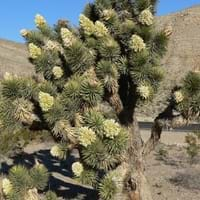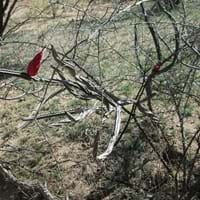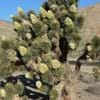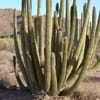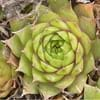Life Span
Perennial
Perennial
Type
Cactus or Succulent, Tree
Flowering Plants
Origin
Southwestern United States, Mexico
Mexico, Caribbean, Central America
Types
Not Available
not available
Habitat
Desert, Dry areas, Rocky areas, Sandy areas
Desert
USDA Hardiness Zone
6-10
12-15
Sunset Zone
9, 10, 11, 12, 13, 14, 15, 16, 18, 19, 20, 21, 22, 23
H2
Habit
Upright/Erect
Weeping
Flower Color
White, Ivory
White, Ivory
Flower Color Modifier
Not Available
Not Available
Fruit Color
Light Green
Non Fruiting Plant
Leaf Color in Spring
Gray Green, Dark Green
Green, Dark Green
Leaf Color in Summer
Gray Green, Dark Green
Green, Dark Green
Leaf Color in Fall
Gray Green, Dark Green
Green, Dark Green
Leaf Color in Winter
Olive, Gray Green, Dark Green
Olive, Dark Green
Leaf Shape
Linear
Long and slender with very sharp edges
Plant Season
Spring, Summer, Fall, Winter
Summer
Sunlight
Full Sun
Partial shade
Growth Rate
Very Slow
Fast
Type of Soil
Loam, Sand
Sand
The pH of Soil
Acidic, Neutral, Alkaline
Neutral, Alkaline
Soil Drainage
Well drained
Well drained
Bloom Time
Early Spring, Spring, Late Winter
Early Summer, Summer
Tolerances
Drought
Drought
Where to Plant?
Ground
Container, Ground
How to Plant?
Leaf Cutting, Stem Cutting
Grafting, Seedlings, Transplanting
Plant Maintenance
Medium
Medium
Watering Requirements
Allow soil to be completely dry in between waterings, Do not water frequently
Does not require lot of watering, Water once every two or three weeks, Water when soil is dry
In Summer
Lots of watering
Lots of watering
In Spring
Moderate
Moderate
In Winter
Average Water
Average Water
Soil pH
Acidic, Neutral, Alkaline
Neutral, Alkaline
Soil Type
Loam, Sand
Sand
Soil Drainage Capacity
Well drained
Well drained
Sun Exposure
Full Sun
Partial shade
Pruning
Remove damaged leaves, Remove dead branches, Remove dead leaves
Remove damaged leaves, Remove dead branches, Remove dead leaves
Fertilizers
All-Purpose Liquid Fertilizer, No fertilizers needed
All-Purpose Liquid Fertilizer
Pests and Diseases
Brown Spots, Red blotch
Aphids, Mealybugs, Root rot, Scale, Viruses
Plant Tolerance
Drought, Dry Conditions, Dry soil, Heat Tolerance, Rocky Soil, Sun
Drought
Flower Petal Number
Single
Semi-Double
Foliage Texture
Bold
Bold
Foliage Sheen
Matte
Not Available
Attracts
Not Available
Not Available
Allergy
Not Available
Not Available
Aesthetic Uses
Decorating walls
Beautification
Beauty Benefits
Not Available
Not Available
Environmental Uses
Air purification
Air purification
Medicinal Uses
Not Available
Diabetes, Hangover
Part of Plant Used
Not Available
Flowers, Fruits, Leaves
Other Uses
Not Available
Employed in herbal medicine, Fine spines and trichomes are used as fiber for weaving, Used As Food
Used As Indoor Plant
No
No
Used As Outdoor Plant
Yes
Yes
Garden Design
Feature Plant, Rock Garden, Wall
Container, Hanging Basket, Houseplant, Tropical
Botanical Name
YUCCA brevifolia
Peniocereus greggii
Common Name
yucca palm
tree yucca
palm tree yucca
Night Blooming Cereus, Reina de la noche, Arizona queen of the night
In Hindi
Joshua Tree
Night Blooming Cereus
In German
Joshua Tree
Nachtblühende Cereus
In French
Joshua Tree
Night Blooming Cereus
In Spanish
Árbol de Joshua
Reina de la noche
In Greek
Joshua Tree
Night Blooming Cereus
In Portuguese
Joshua Tree
Night Blooming Cereus
In Polish
Joshua Tree
Noc Blooming Cereus
In Latin
Joshua ligno
Maria Maria Cereus
Phylum
Tracheophyta
Magnoliophyta
Class
Magnoliopsida
Magnoliopsida
Order
Asparagales
Caryophyllales
Family
Agavaceae
Cactaceae
Clade
Angiosperms, Monocots
Angiosperms, Core eudicots, Eudicots
Tribe
Not Available
Pachycereeae
Subfamily
Not Available
Cactoideae
Season and Care of Joshua Tree and Night Blooming Cereus
Season and care of Joshua Tree and Night Blooming Cereus is important to know. While considering everything about Joshua Tree and Night Blooming Cereus Care, growing season is an essential factor. Joshua Tree season is Spring, Summer, Fall and Winter and Night Blooming Cereus season is Spring, Summer, Fall and Winter. The type of soil for Joshua Tree is Loam, Sand and for Night Blooming Cereus is Sand while the PH of soil for Joshua Tree is Acidic, Neutral, Alkaline and for Night Blooming Cereus is Neutral, Alkaline.
Joshua Tree and Night Blooming Cereus Physical Information
Joshua Tree and Night Blooming Cereus physical information is very important for comparison. Joshua Tree height is 610.00 cm and width 300.00 cm whereas Night Blooming Cereus height is 180.00 cm and width 90.00 cm. The color specification of Joshua Tree and Night Blooming Cereus are as follows:
Joshua Tree flower color: White and Ivory
Joshua Tree leaf color: Gray Green and Dark Green
Night Blooming Cereus flower color: White and Ivory
- Night Blooming Cereus leaf color: Green and Dark Green
Care of Joshua Tree and Night Blooming Cereus
Care of Joshua Tree and Night Blooming Cereus include pruning, fertilizers, watering etc. Joshua Tree pruning is done Remove damaged leaves, Remove dead branches and Remove dead leaves and Night Blooming Cereus pruning is done Remove damaged leaves, Remove dead branches and Remove dead leaves. In summer Joshua Tree needs Lots of watering and in winter, it needs Average Water. Whereas, in summer Night Blooming Cereus needs Lots of watering and in winter, it needs Average Water.
